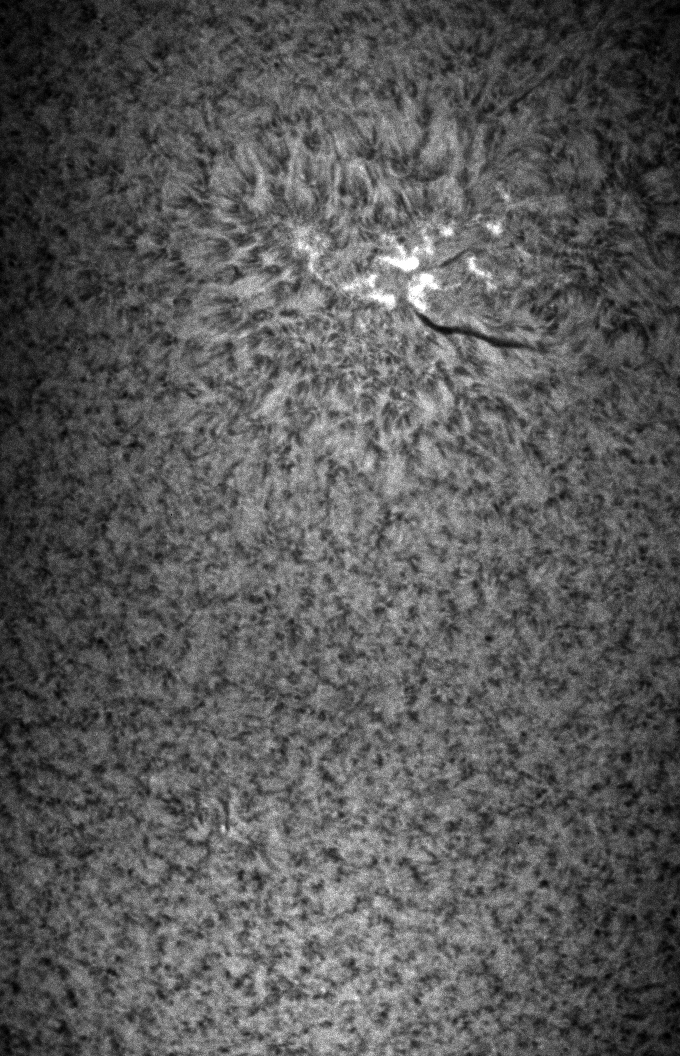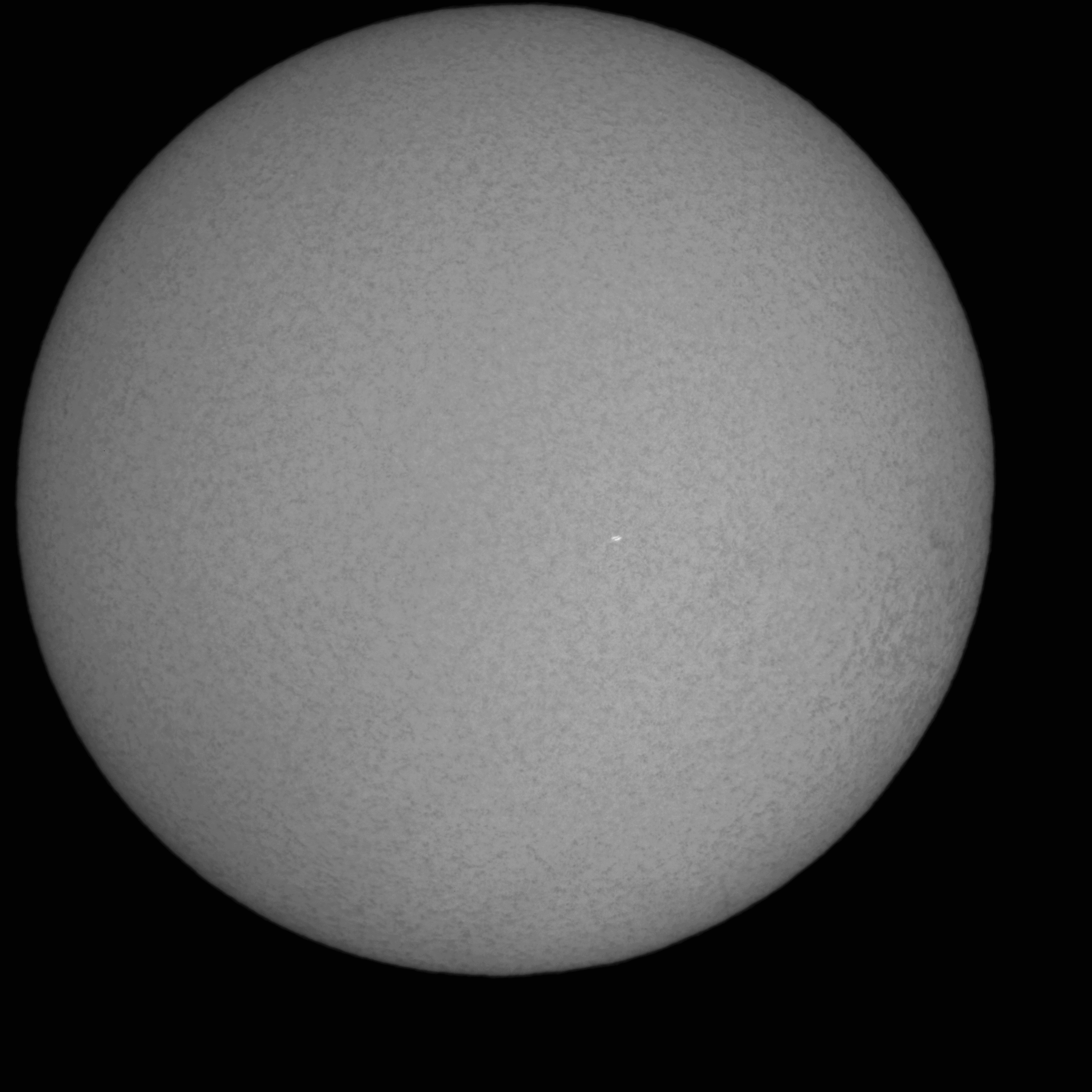On January 07, 2008, a brand new camera from the Uccle observatoria catched the Sun in the H-alpha wavelength.
A new camera was installed on the equatorial table of the solar dome in Uccle. A few full disk pictures were taking in the H-alpha line.
H-alpha emission has a wavelength of 656.281 nanometers and is situated in the red part of the visible spectrum. If you look at the sun without any filter, you receive the complete set of waves of the visible part of the electromagnetic spectrum. What you see in that case is the photosphere, defined as the surface of the Sun. When you filter out the H-alpha line, you focus on a slightly hotter part of the Sun on top of the photosphere, namely the chromosphere. Electromagnetic waves with shorter wavelengths, like EUV, do not pass through the earth magnetosphere. From earth, we can't see higher parts of the Sun, like the corona which emits predominantly in hotter, shorter wavelengths.
But the photosphere and chromosphere provide accommmodation to several beautiful solar structures. Observations of these layers have also scientific value and are complementory to (space) observations. The advantage of ground based measurements is for example the fact that you simply can modify your camera configuration. While for space-missions, it has to be good from the first moment since a trip to space for fixing is most of the time out of the question.
For the people interested: the camera is a Kodak KAI-4021 interline sensor. The interline technology permits the camera to operate shutterless.
The picture is a detail of a full disk image. The bright features are plages: a cloud-like feature with a higher temperature compared with its surroundings. The dark line is a prominence: a cloud of plasma floating over the surface of the sun. It is black since it blocks the radiation from the solar surface below it. Click for the full solar disk picture. The tiny white spot in the photo is the chromospheric signature of an H-alpha micro-flare: a local and temporary increase of emitted energy in the electromagnetic spectrum, here at 656.281 nm. At that particular place on the solar disk, the temperature increased suddenly. The plasma located at the place of initiation, emits during the flare in a higher energy range and becomes white/invisible in the picture. Since the white spot is small we speak about a micro-flare.







